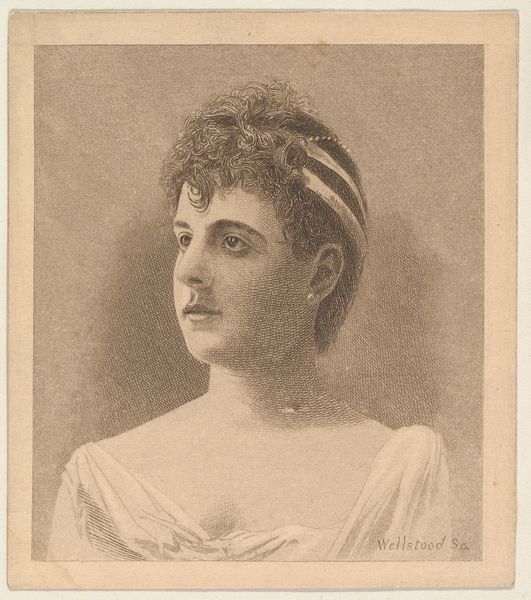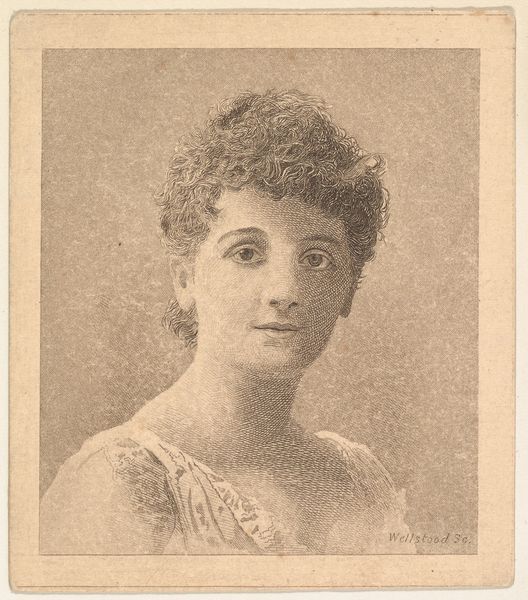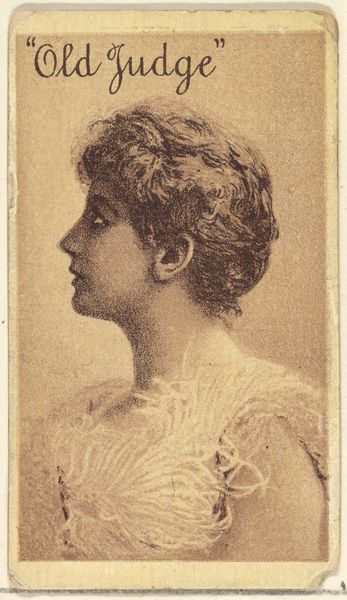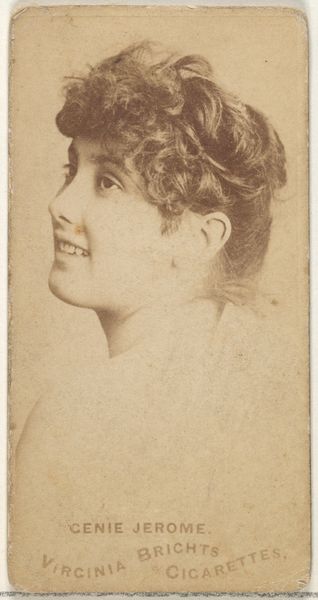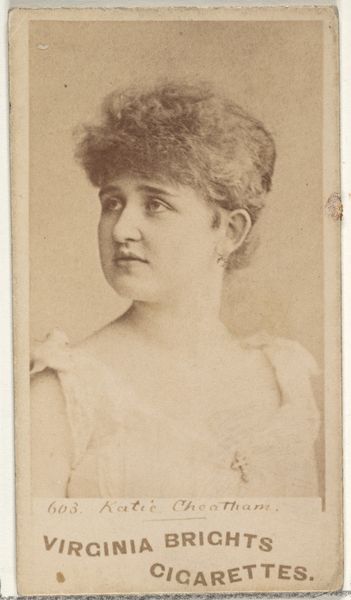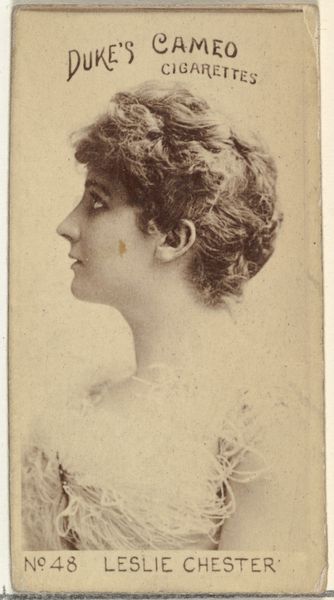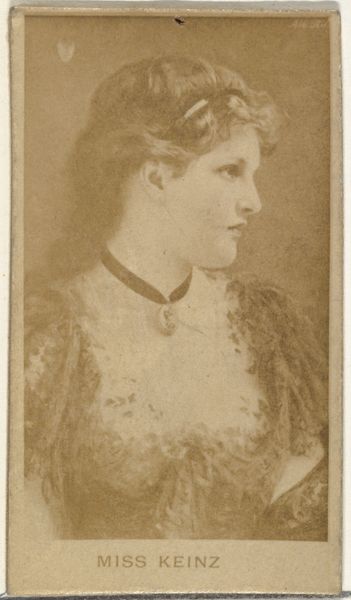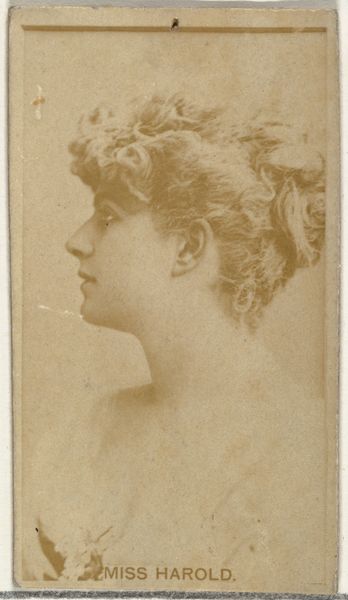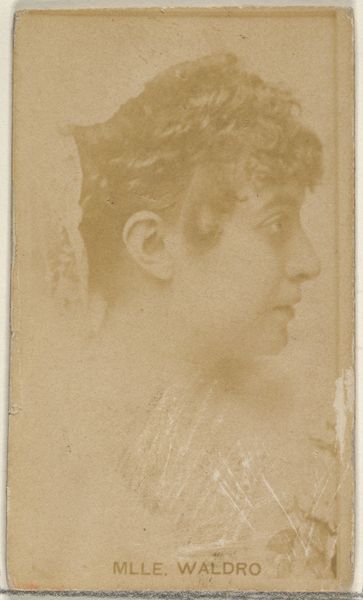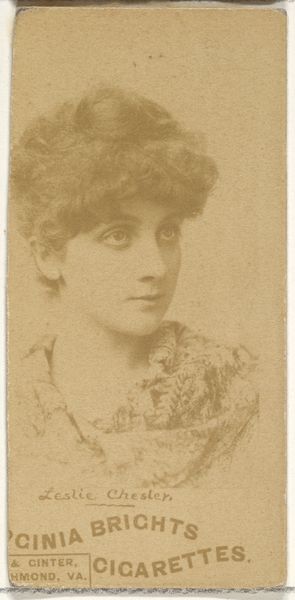
Portrait, from the Women's Portraits series (N198) issued by Wm. S. Kimball & Co. 1889
0:00
0:00
drawing, print, paper, ink
#
portrait
#
drawing
# print
#
paper
#
ink
#
pencil drawing
Dimensions: Sheet: 3 1/4 × 2 13/16 in. (8.2 × 7.2 cm)
Copyright: Public Domain
Editor: This portrait, made by Wm. S. Kimball & Co. in 1889 as part of their "Women's Portraits" series, is rendered in ink on paper. There's a delicate quality to the lines; it feels very commercial yet somehow also quite intimate. What strikes you most about this piece? Curator: Well, firstly, let's consider the nature of "Wm. S. Kimball & Co." – not artists in the traditional sense, but a tobacco company issuing collectible cards. It’s a prime example of how industry permeates culture. The image, produced using reproductive printing techniques, was clearly meant for mass consumption. We must then ask, what role does labor play? Editor: You mean the labour of the artist versus the production? Curator: Precisely! Whose hands guided the tools that made the printing plates? Consider the vast disparity between artistic skill and the ultimate purpose of the artwork – to sell cigarettes. This raises intriguing questions about value: Is this art or merely an advertisement? Editor: I see what you mean. So, it's not just about the face, but the entire economic system that produced this image. Curator: Exactly! The materiality speaks volumes. Ink, paper, and printing presses were readily available materials employed to manufacture desire and brand loyalty. We have to consider that this also represents a specific intersection of gender, consumption, and emerging mass culture. Editor: That's fascinating! I initially focused on the portrait itself, but now I understand that the real story is in the materials and the making of it. Curator: Indeed. Shifting the focus from the "artistic genius" to the means of production provides fresh and thought-provoking insights.
Comments
No comments
Be the first to comment and join the conversation on the ultimate creative platform.
